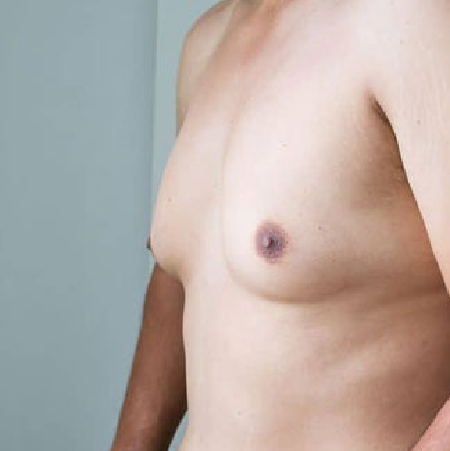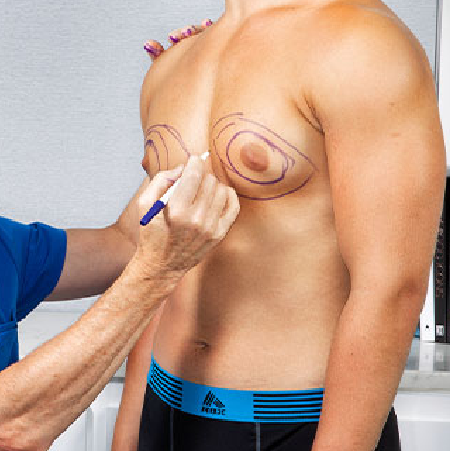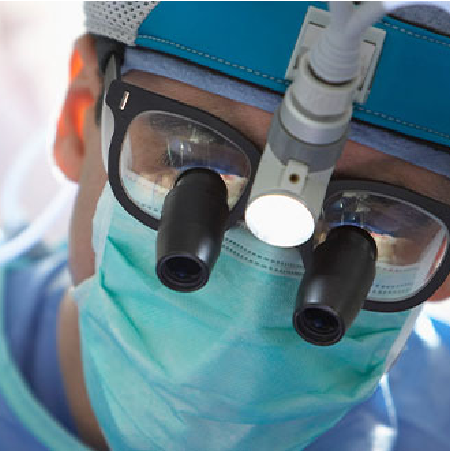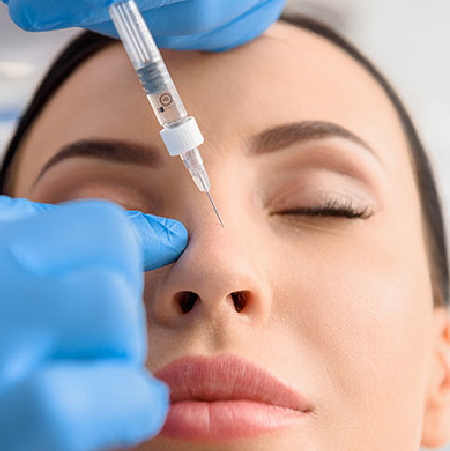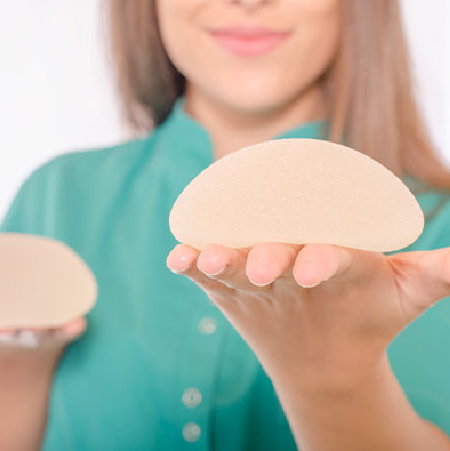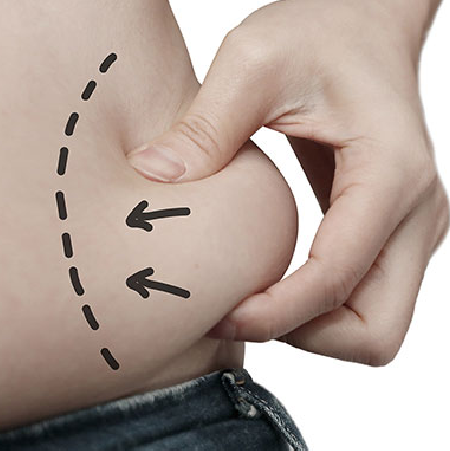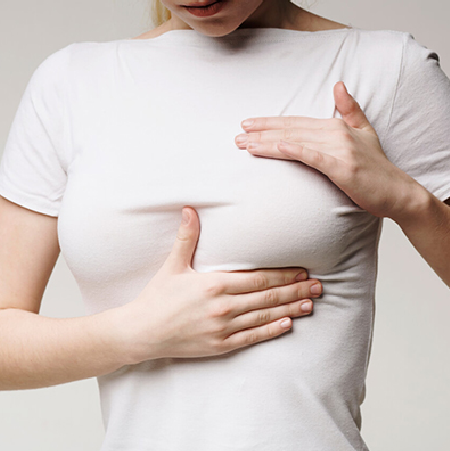Types of liposuction

Surgeons use several types of liposuction methods to remove extra fat from the body. The choice of technique depends on various factors, including the patient’s goals, the amount of fat to remove, and the surgeon’s expertise.
Some common Types of liposuction are:
Traditional Liposuction :
This is how doctors have performed liposuction for a long time, also called suction-assisted liposuction (SAL). The surgeon makes small cuts in the area to be treated and inserts a thin tube called a cannula. The cannula connects to a suction device that helps remove the fat deposits.
Tumescent Liposuction :
This method includes injecting a big amount of a solution called tumescent fluid into the intended area. Tumescent fluid contains a local anesthetic (lidocaine) to numb the area and a vasoconstrictor (epinephrine) to constrict blood vessels and minimize bleeding. The expanded area helps make fat removal easier and reduces pain during and after the operation.
Power-Assisted Liposuction (PAL) :
PAL involves the use of a specialized cannula that vibrates or rotates rapidly. This mechanical motion helps break up fat cells and makes it easier for the surgeon to remove the fat.
Ultrasound-Assisted Liposuction (UAL) :
In UAL, the fat cells are melted with ultrasound energy before they are removed. The surgeon places a cannula releasing ultrasound waves into the target area, which breaks down the fat cells. The fat that has been emulsified is then sucked out.
Laser-Assisted Liposuction (LAL) :
LAL involves the use of laser energy to melt the fat cells. The surgeon inserts a laser fiber through a small incision and delivers laser energy to the fat cells, causing them to liquefy. The liquefied fat is subsequently removed using suction.
Water-Assisted Liposuction (WAL) :
Also known as water jet-assisted liposuction, WAL uses a forced stream of saline solution to loosen and remove fat cells. The technique involves the injection of the saline solution into the target area, which helps loosen the fat cells. The dislodged fat is then suctioned out.
It’s important to note that the specific technique used may vary depending on the surgeon’s preference and the individual patient’s needs. Consulting with a skilled plastic surgeon is crucial to determine the most suitable type of liposuction for your particular case.
What is the latest Types of liposuction?
VASERlipo or VASER Liposuction is the latest and most popular type of liposuction. VASER stands for Vibration Amplification of Sound Energy at Resonance. It is a liposuction method that uses ultrasound technology to break down and remove unwanted fat in a way that is not too invasive.
During VASERlipo, the surgeon makes small cuts in the treated area and injects a tumescent saline solution to numb the area and narrow the blood vessels. Then, the surgeon inserts a VASER probe, which emits ultrasound waves that specifically target the fat cells while preserving surrounding tissues, such as nerves, blood vessels, and connective tissues.
The ultrasound energy emitted by the VASER probe disrupts the fat cells, causing them to liquefy. This makes it easier for the surgeon to remove the fat through gentle suction. The selective nature of VASERlipo allows for more precise contouring and sculpting of the treated area.
One advantage of VASERlipo is that it can target various areas of the body, including the abdomen, thighs, arms, back, and chin. Surgeons often combine it with other liposuction techniques or use it as part of body contouring procedures.
It’s important to note that liposuction techniques and technologies are always getting better. It’s always best to talk to a board-certified plastic surgeon who can give you the most up-to-date information on the latest liposuction options.
What type of liposuction is most effective?
Liposuction results may be affected by a number of variables, such as the patient’s unique qualities, the targeted treatment region, and the chosen technique. It’s important to remember that the best liposuction technique will depend on the needs of the patient, the skill of the surgeon, and the desired results.
Tumescent liposuction is highly effective and one of the most commonly performed liposuction techniques. It allows surgeons to remove fat precisely and can be used on various areas of the body. The use of tumescent solution helps reduce blood and bruising, resulting in a faster recovery.
Power-Assisted Liposuction (PAL) is a technique that enhances traditional liposuction by using vibrational mechanical energy to more effectively disrupt fat cells. This method excels at eliminating fat from larger areas or those with a high concentration of fat cells. The vibrations can help remove fat more quickly and accurately.
Laser-Assisted Liposuction (SmartLipo, SlimLipo): Laser energy is used in laser-assisted liposuction to melt fat cells before they are removed. The laser energy can also stimulate collagen production, potentially leading to improved skin tightening. Laser-assisted treatments may be useful for targeted fat removal and improving body shapes.
Ultrasound-Assisted Liposuction (UAL): UAL involves the use of ultrasound energy to disrupt fat cells, making them easier to remove. This method works best on areas with a lot of muscle, like the back or male chest. UAL can remove fat more precisely and may also help thin the skin.
Water-Assisted Liposuction (Body-Jet): Water-assisted liposuction uses a gentle spray of fluid to loosen and remove fat cells. This technique is less traumatic to the surrounding tissues, resulting in reduced swelling and bruising. It can work well on sensitive areas and make the results smoother.
It’s important to remember that the effectiveness of liposuction depends not only on the technique used but also on the skill and experience of the surgeon performing the procedure. A qualified and experienced plastic surgeon will evaluate your specific needs and recommend the most suitable technique to help you achieve the desired results.
How much weight can I lose with liposuction?
Liposuction is not mainly a weight loss procedure but rather a body shaping operation. Its main goal is to remove localized fat stores and improve body proportions and outlines. The amount of weight you can lose through liposuction is usually small and changes from person to person.
Liposuction targets specific areas of extra fat that are resistant to diet and exercise. During a liposuction process, the surgeon determines the amount of fat that can be safely removed based on factors such as your overall health, the method used, and their professional opinion.
It’s important to understand that liposuction is not a replacement for weight loss methods such as food and exercise. It is more appropriate for individuals who are close to their ideal weight but have specific areas of stubborn fat that are resistant to traditional weight loss efforts.
Most of the time, the results of liposuction are measured in inches or centimeters, not pounds. The goal is to improve the shape of the body and make it look more balanced. The amount of fat removed during the procedure may vary, but it is important to have realistic expectations and focus on the overall improvement in body shape rather than solely on the numbers on the scale.
Read more: Liposuction surgery in Iran
If liposuction is something you’re thinking about, it’s best to consult with an experienced plastic surgeon who can evaluate your unique situation, go over your desired outcomes, and give you an honest assessment of the likelihood of each outcome. They will be able to advise you on whether or not liposuction is the best course of therapy for you.
Which types of liposuction do we not recommend?
While various factors determine the choice of liposuction method, and a trained plastic surgeon should guide the decision, some types of liposuction may receive fewer recommendations or have limitations in certain scenarios. Here are a few examples:
Dry Liposuction
Dry liposuction is a technique where surgeons do not inject a solution into the treatment area before fat removal. Experts consider this technique outdated, and they have largely replaced it with safer and more effective methods, such as tumescent liposuction . Dry liposuction carries a higher risk of bleeding, bruising, and uneven fat removal, making it less recommended compared to other methods.
Large Volume Liposuction
Large volume liposuction refers to the removal of a significant amount of fat, typically exceeding five liters, during a single session.Skilled doctors can safely perform large volume liposuction in some situations, but it carries a higher risk of complications, such as fluid imbalances and changes in blood pressure. Doctors must carefully monitor the procedure, and it should only take place in appropriate settings.
High-Definition Liposuction
High-definition liposuction is a specialized technique that enhances muscle contours by selectively removing fat around specific muscle groups .This technique is not suitable for everyone and should only suit individuals with good muscle tone who want a highly sculpted and defined appearance .It needs a skilled expert who knows how to get results that look natural.
Superficial Liposuction
Superficial liposuction, also known as subdermal liposuction, works on removing fat from the superficial layers of the skin. Surgeons typically use this technique for skin tightening or addressing superficial irregularities. However, it has limitations regarding the amount of fat that can be safely removed and may not suit all individuals or body areas.
The choice of a liposuction technique depends on several factors, such as your goals, medical history, body type, and your surgeon’s recommendation. It is essential to consult a qualified and experienced plastic surgeon to identify the best technique for your needs and to achieve safe, effective results.
What is the best alternative to liposuction?
Liposuction is a common and effective way to get rid of extra fat and change the shape of the body. But there are other choices for people who would rather not have surgery or have less invasive treatments. Here are a few options to liposuction:
Non-Surgical Fat Reduction
Modern technologies are used in non-surgical fat-reduction methods to target and get rid of specific fat stores without surgery. Most of the time, these treatments work by killing fat cells with techniques like cooling (cryolipolysis), radiofrequency, laser energy, or ultrasound. CoolSculpting, SculpSure, Vanquish, and UltraShape are all common ways to get rid of fat without surgery.
Injectable treatments to get rid of fat
Kybella and Deoxycholic Acid are two injectable treatments designed to remove submental (under-chin) fat. Laboratories produce the deoxycholic acid in these shots. This acid occurs naturally in the body and helps break down fat. The surgeon plans the shots to target and remove fat in the area being treated over a number of sessions.
Body Contouring Procedures
There are many ways to improve the shape and curves of your body that don’t involve surgery. These treatments typically involve high-tech tools like radiofrequency, laser, or ultrasound to smooth the skin and reduce the appearance of cellulite. Examples include radiofrequency treatments like Thermage and Exilis, laser treatments like BodyFX and Velashape, and ultrasound treatments like Ultherapy.
Diet and Exercise
Adopting a healthy lifestyle with a balanced diet and regular exercise can support weight loss and improve overall body composition. Eating well and staying active can help reduce excess body fat and enhance muscle tone, contributing to a more toned appearance.
The effectiveness of non-surgical alternatives to liposuction depends on factors such as the amount of fat targeted, the desired outcome, and how an individual responds to treatment. Consulting a qualified doctor or aesthetic specialist is essential. They can help determine the best option based on your goals, preferences, and medical needs.
How to Choose the Right Liposuction Type for You
To choose the right type of liposuction for you, you should think about your goals, your body type, your medical history, and the advice of a qualified medical professional. Here are some steps to help guide you in the process:
Research Different Liposuction Techniques
Learn about the different methods of liposuction that are available. Common types include traditional liposuction, tumescent liposuction, ultrasound-assisted liposuction (UAL), laser-assisted liposuction (LAL), and power-assisted liposuction (PAL). Understand how each technique works, their pros and cons, and the areas of the body they are most suitable for.
Talk to a plastic surgeon who is board-certified
Schedule an appointment with a board-certified plastic surgeon who specializes in liposuction. They will figure out what you need, look at your body, and give you specific advice based on your goals and medical history. Discuss your expectations, concerns, and desired outcomes openly with the surgeon.
Check Your Body Type and the Areas You Want to Change
Different liposuction methods may work better for different body types and different parts of the body. For example, UAL or LAL may be suitable for treating smaller, delicate areas, while PAL may be better for larger areas. Your surgeon will measure your body type, fat distribution, and target areas to decide the most suitable method.
Consider Safety and Recovery
Each liposuction technique has its own safety profile and recovery process. During your consultation, talk about the possible risks, side effects, and recovery time for each technique. Take into account things such as the invasiveness of the operation, anaesthetic needs, scars, and the expected healing time.
Review Before and After Photos
Request that your surgeon share before-and-after photos of previous liposuction patients with similar body types and target areas. These images can help you understand the potential results of different techniques and better visualize your desired outcome.
Follow Professional Advice
In the end, you and your plastic surgeon should decide on the best type of liposuction together. They have the knowledge and experience to suggest the most ideal method based on your unique situations. Consider their advice, ask questions, and seek clarification on any concerns you may have.
Remember that liposuction is not a substitute for a healthy lifestyle, and it’s important to maintain realistic expectations about the outcomes. Focus on picking a famous surgeon who values patient safety and has a track record of good results.
FAQ
How many types of liposuction are there?
There are several types of liposuction techniques available, each with its own unique approach and technology. Some of the most popular kinds of liposuction are:
Traditional Liposuction, Tumescent Liposuction, Ultrasound-Assisted Liposuction (UAL), Laser-Assisted Liposuction (LAL), Power-Assisted Liposuction (PAL), and Water-Assisted Liposuction (WAL).
Which fat is hardest to remove?
- Visceral Fat
It is located deep within the body and can be more difficult to remove compared to subcutaneous fat (fat stored just beneath the skin). Visceral fat is also linked with higher health risks such as cardiovascular disease and diabetes.
- Male Breast Tissue
In some cases of gynecomastia (enlarged male breasts), excess glandular tissue or fatty deposits can develop. This kind of tissue can be harder to get rid of because it may require a mix of liposuction and surgery.
- Upper Back (“Bra Bulge”)
The fat that accumulates in the upper back, often called the “bra bulge,” can be difficult to reduce with diet and exercise alone. Treating this area may require specialized techniques like ultrasound-assisted liposuction (UAL) or laser-assisted liposuction (LAL) to effectively target and remove the stubborn fat deposits.




